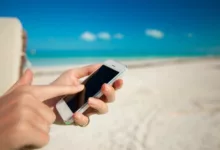Thanks to the Internet, people who go abroad can now easily stay connected and get useful information while on the go. It has now become a cost-efficient solution for anyone where all a person would need is to get hold of a prepaid SIM card and load it up, depending on how long a person would be staying in a particular region.
Southeast Asia is one of the popular stops can consider where regions have ready access to the Internet. In areas like the Philippines and Singapore, all one has to do is get hold of a prepaid or tourist SIM, bundled with the needed services such as voice calls, text messaging and web browsing.
The type of Internet connection will vary according to the country. In the Philippines, there are a couple of service providers that offer such although efficiency is questionable on certain days (i.e. weekends). It is practically the same case in Singapore although they do offer lucrative packages that a tourist may not immediately use up.
Seeing how some people tend to use SIM cards for mischievous purposes, there are countries who implement strict policies before one can purchase it. They need proper identification and price them expensively, a downside yet necessary to prevent unfortunate incidents (i.e. scams and theft).
SIM cards are normally used on phones although there are people (especially the ones who travel in groups) who turn to portable WiFi devices. With an Internet connection, messaging and social media apps now suffice when it comes to calling, texting or even sharing photos/ videos from around the globe.
A problem does arise at some point since the bandwidth allocation varies per location. The number of users connected to a device would alter the normal Internet speed, meaning some may suffer lag or poor connections. Thankfully, there are ways to work around this and they come in the form of a portable WiFi booster.
With a WiFi booster, individuals can enjoy broader coverage in order for them to get on the web. It should also come in handy for those who prefer to stay in one place like a hotel or a rented apartment, avoiding dead spots that normally occur if a person finds himself out of range of the capable coverage of a WiFi-covered area.
The type of portable WiFi device depends on the usual things. It will all boil down to whether a person is particular about the brand, cost and the size of the device. All one has to do is insert a SIM card although it would be best to reiterate that the quality of the connection will vary per country. Also, and perhaps the most important thing, compatibility could be an issue when getting a portable WiFi device.
Hence, it would be best to carefully check the device and ask the vendor its features to make sure that money is not wasted. After that is resolved, those who want to have a wider scope of Internet coverage can consider getting the portable WiFi extenders.
With so many areas and landmarks to see, there is no denying that access to the Internet is essential. Sharing or making sure that one is within reach is important, especially for those embarking on business trips. Rather than worry about high phone bills (something that usually happens for those who have roaming services with their local providers), Internet-ready devices can easily bring down that unwanted expenses and provide folks with a worry-free exploration of other countries.
Finally, there are service providers who do offer SIM cards that can be used in the global stage. They will cost more compared to the standard ones, an issue that some may not mind.
The decision to get one or not will depend on the region where one is headed. As mentioned earlier, there are countries like Indonesia who have strict rules on the purchase of a SIM card. The best way is to do preliminary research to see the type of SIM cards being offered and governing regulations tied to them, if applicable.
In the new age, the Internet has changed a lot of things but in a good way. It has become an economical solution for anyone in the world, making sure that they stay connected and the bragging rights, showing to their family and friends where they are and what they are doing using a mobile phone, tablet or even a laptop.








